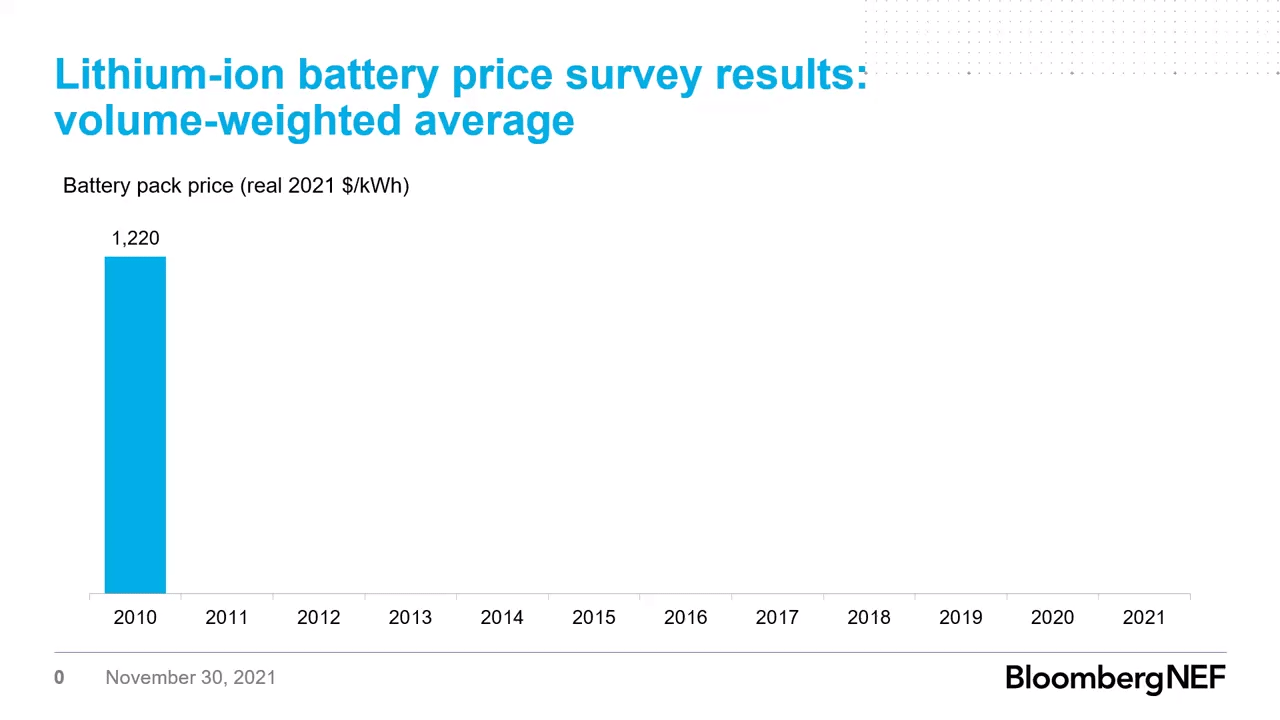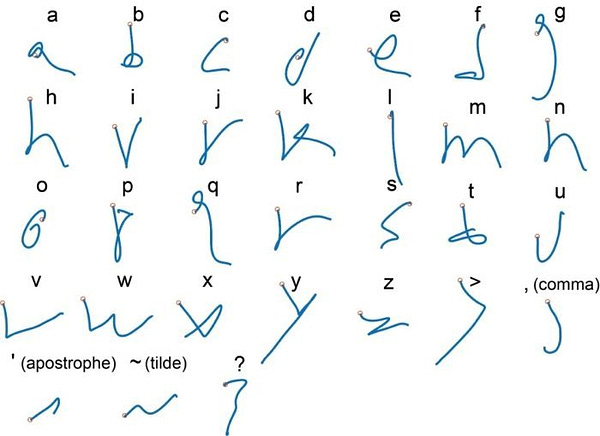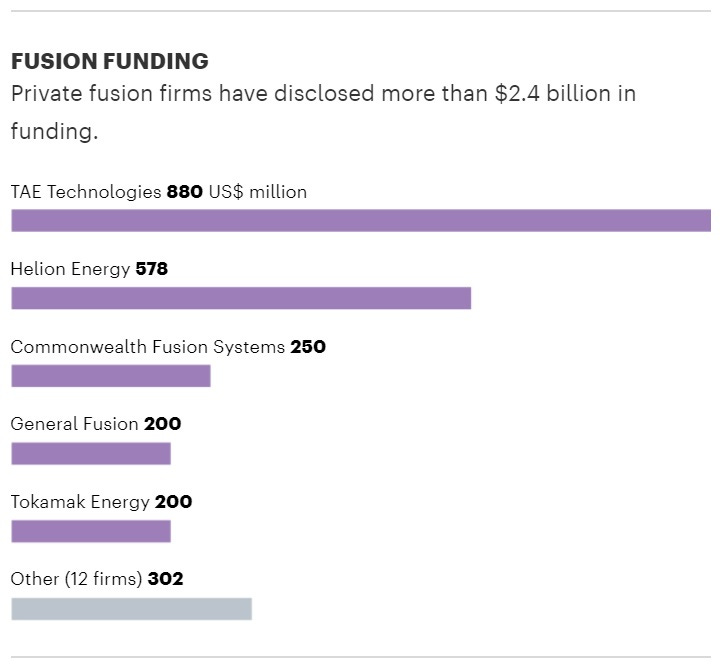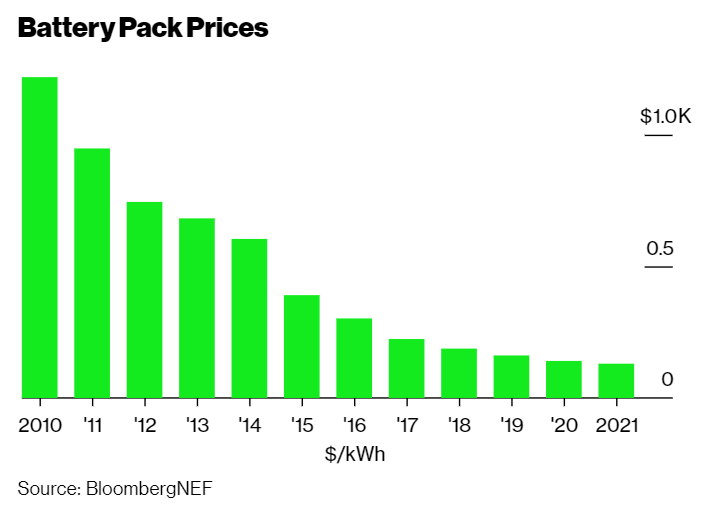This blog started out a year ago as an explicitly techno-optimist blog, and I feel like I've gotten away from that a little bit. This isn't because I'm less optimistic about technology, but because it's very easy to get distracted by stuff like economic policy, social unrest, China's economy, Covid, and so on. But it's time to go back to my roots a little here.
It's still too early to tell whether we'll get the Roaring Twenties that some have predicted. There are certainly reasons for doubt. After a great first quarter, labor productivity is now actually falling, due mostly to supply chain snarls disrupting production, but also possibly due to Covid variants and the uncertain and chaotic process of workers partially returning to the office. Goldman Sachs, one of the early proponents of the Roaring Twenties thesis, is now forecasting anemic growth in the year ahead.
Also, one of the most optimistic tech trends — the shift to remote work — might not be panning out as hoped. Some still expect remote work to reshape our economy in positive ways, but some new research suggests that physically separating workers can reduce information sharing, and many companies are now demanding that workers return to their desks. So the jury is still out on whether that's going to offer a productivity bonanza.
But despite these setbacks, stumbles, and headwinds, I'm still massively optimistic for the decade ahead.
The energy revolution
Energy is fundamental to all physical technology — to move atoms around in real space, you need energy. And in the early 1970s, what had been a trend toward greater and greater energy use suddenly stopped, making it much harder to innovate in the physical realm:
We compensated for this by innovating in digital technologies ("bits"), but these are somewhat less conducive to rapid productivity growth, so productivity stagnated (this is the answer to the famous question of "WTF happened in 1971?"; it was actually 1973, and it was the Oil Shock).
The oil shocks were political, but fundamentally the energy stagnation was technological. The Industrial Revolution had been powered by a move from wood and animal power to coal and then oil, but the next transition — to nuclear — was stymied because people were too afraid of the risks. We can argue about whether that was a mistake all day (I think it probably was), but it's in the rearview mirror now.
Fortunately, after the stymying of nuclear, our scientists and engineers worked very very hard for a long time, and came up with safe, environmentally friendly technologies that are even better in most ways than nuclear: Wind and solar. Decades of staggering cost declines — made possible at first through government-funded research, then by government-subsidized scale-up in the private sector — mean that renewables are now ready for prime time. To translate those cost declines into cheaper energy, we actually have to built the generation capacity. And we are now building it.
Bloomberg New Energy Finance has the numbers. In 2020, most electric power generation sources shrank — especially coal and natural gas — but solar and wind grew.
The International Energy Agency, which has traditionally been too conservative in predicting the rise of renewables, now forecasts that the trend will continue strongly throughout the decade:
By 2026, global renewable electricity capacity is forecast to rise more than 60% from 2020 levels to over 4 800 GW – equivalent to the current total global power capacity of fossil fuels and nuclear combined. Renewables are set to account for almost 95% of the increase in global power capacity through 2026, with solar PV alone providing more than half. The amount of renewable capacity added over the period of 2021 to 2026 is expected to be 50% higher than from 2015 to 2020.
Solar, the real miracle technology in this story, will be more than half of that.
Now, as everyone knows, renewables are intermittent; the sun is not always shining and the wind is not always blowing. Batteries can store electricity overnight, and solar can be overbuilt for the winter, but that doesn't solve the whole problem. Intermittency means that on the margin, we can get cheaper electricity by replacing fossil fuels with solar, but as a larger percent of the grid becomes solar and wind, the cost advantages will go away. So to really keep that energy revolution going, we'll need a lot of storage, which companies and researchers are now working on. The most promising technologies for rapid cheap large-scale storage include iron flow batteries, thermal energy storage, and hydrogen. Countries are also building more nuclear reactors — these are expensive, but will help firm up power generation.
Cheap solar, cheap wind, and cheap storage mean that we could see the first large sustained decrease in electricity costs in over half a century. People are finally starting to realize this, and are speculating about what could be done with cheap abundant electricity. I offered my thoughts here and here:
 Noah Smith 🐇 @Noahpinion
Noah Smith 🐇 @NoahpinionJason Crawford @jasoncrawford
What are some compelling examples of new things we could do with energy abundance—say, 10x (or more) energy usage per capita?November 1st 2021
67 Retweets614 LikesMany more good ideas can be found in the replies to Jason Crawford's thread. Here are some of Tyler Cowen's thoughts:
How about heating and cooling? It might be possible to manipulate temperatures outdoors, so Denmark in January and Dubai in August would no longer be so unbearable…Eventually, more flying would be automated. Robots would become far more plentiful…Cheap energy would also make supercomputing more available, crypto more convenient, and nanotechnology more likely…[T]echnologies…to remove methane (and carbon) from the air…are also likely to be more feasible and affordable.
The reality of cheap electricity — not 30 or 50 years in the future, but in the coming decade — is thus starting to sink in. This is really happening.
And amazingly, solar/wind/storage might not be the only cheap electricity-producing technology on the horizon. There has been a massive explosion of funding and startups in the field of fusion power:
Though it isn't commercially viable yet, the field is advancing by leaps and bounds, with notable breakthroughs in multiple types of fusion technology. The old joke that fusion is always 30 years in the future is just about played out.
And as if that weren't enough, geothermal electricity is poised for a big expansion. Check out this new policy paper by Daniel Oberhaus and Caleb Watney on geothermal's potential, especially in the Western U.S.
So cheap electricity is on the way. The fossil fuel age that began with James Watt is about to finally yield to something — perhaps several somethings — cheaper and more abundant.
But here's the thing. Cheap electricity is only one of the two energy revolutions that's happening right now.
The other is a revolution in how we store and transport energy. Battery technology has advanced amazingly quickly, dropping in cost by 90% over the past decade:
Further declines are forecast in the next few years, despite the supply crunch. As always, Bloomberg New Energy Finance is the best data source here, so check out this thread by the excellent Nat Bullard:
 Nat Bullard @NatBullard
Nat Bullard @NatBullard
November 30th 2021
137 Retweets364 LikesThis will obviously allow electric cars to replace internal combustion vehicles, which will be good for the environment, as well as higher-performing in many ways (electric cars accelerate much faster, are naturally much quieter, have far fewer moving parts that need servicing, and generate less particulate pollution). But the battery revolution goes far, far beyond passenger vehicles. It changes the entire way humans are able to carry energy around with them.
Some people scoff at batteries because their energy density is less than the energy density of fossil fuels. This scoffing reflects a fundamental misunderstanding of how energy portability works. The weight and volume of a system to transport fossil fuel energy also involves all the machinery required to extract the energy — the combustion chamber, the piston, the crankshaft, the valves, and all of that stuff. A battery may not be as energy-dense as gasoline, but all you need in order to extract the energy from it is a few tiny little strips of metal. This is a big part of why you have a battery in your phone instead of a gas tank.
It also means that we're entering an age when small, light, portable machines can carry quite a lot of energy around with them. Drones are the most obvious application; small battery-powered quadcopters may change the face of warfare and offer all kinds of delivery services. High-capacity batteries will also power the robot revolution, allowing bots to move around factory floors, hospitals, and many other environments freely and giving them the power to do all sorts of tasks. And better batteries will also enable the creation of all kinds of cheap, light, portable appliances — something I first realized when I saw protesters defeating tear gas attacks with electric leaf blowers in Portland in 2020.
Finally, cheap batteries are already enabling new modes of transportation, which will change the entire way that cities function. E-bikes are the most promising technology here, and the government is preparing to spend big on them in the coming years. Electric scooters and personal air taxis are two other important examples that could revolutionize how we get around within the decade.
In other words, batteries aren't just useful for storing energy, they're useful for moving small bits of energy around very lightly and efficiently. And that is going to transform our physical world. It's highly complementary to cheap electricity — whether our electricity comes from solar, fusion, or geothermal, batteries will be a big part of how we put that energy to use.
These two energy revolutions aren't on the far horizon; they are happening right now, before our eyes. And they will define this decade.
Biotech (or, the Age of Miracle and Wonder)
At the same time that the energy revolution is poised to reshape our relationship to the physical world, an explosion of biotechnology is poised to reshape the very nature of human life. This is a decade that began with mRNA vaccines arriving just in the nick of time to save millions of people from a global plague. And mRNA promises vaccines for everything from malaria to various kinds of cancer to any number of other diseases. But amazingly, it's only one of many bio breakthroughs that are just now coming to fruition! Here's a short list of miracles that have recently floated across my screen, just within the last couple of months:
1) Brain-computer interface:
 garrytan.eth 陈嘉兴 🥑🌐🦇🔊🍌🔺(∞, ∞) @garrytan
garrytan.eth 陈嘉兴 🥑🌐🦇🔊🍌🔺(∞, ∞) @garrytan
November 11th 2021






